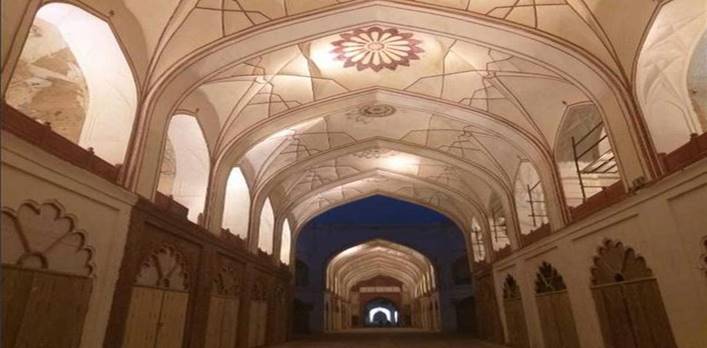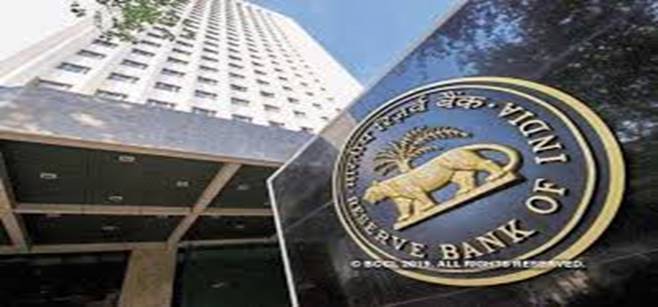Rajasthan call for accountability law
News important for: GS paper 2 I Citizens charters, transparency & accountability.
Context
Civil society groups have called upon Congress government in Rajasthan on social accountability to ensure better delivery of public goods and services.
About
- The move comes after the draft proposed bill by Rajasthan government on social accountability.
- Rajasthan is the first state to propose such a bill and invite suggestions from the general public.
Rajasthan Social Accountability Bill
- The bill includes a body, which is under the control of the government, governor and the high court of Rajasthan.
- It imposes penalties and compensation and initiate departmental action against non-transparency and non-deliverance of duties.
- The Bill will also set up a grievance redressal mechanism starting from village panchayats.
Objectives of the bill
- To seek public functionaries accountable for timely delivery of goods and services.
- To create a democratic, decentralized and participative approach to enable wider public participation.
|
What is social accountability?
Social accountability" refers to actions initiated by citizen groups to hold public officials, politicians, and service providers to account for their conduct and performance in terms of delivering services, improving people's welfare and protecting people's rights.
|
Way Forward
This law will empower citizen’s right to information, hold the department accountable and enquire without relying on departmental enquiry.
Source link:
https://www.thehindu.com/news/cities/kolkata/call-for-accountability-law-in-rajasthan/article28130298.ece
National Policy Education Bill, 2019
News important for: GS paper 2 I Education
Context
The draft of national policy education bill has been recently submitted by a committee led by Dr. Kasturirangan.
About
- It is an amendment to the extant National Policy on Education, 1986 modified in 1992 as it required changes to meet the contemporary needs of the educational system.
- It aims to upgrade quality education, innovation, research and development and skills of the youth of the nation.
Key changes of the bill
- Sanskrit at all levels of education: Sanskrit should be taught at all levels of school and higher education as one of the optional languages on par with all Schedule 8 language.
- Extension of the Right to Education (RTE) Act: RTE, which currently applies to classes I to VIII, will now be applicable to the entire school system from pre-school to class XII. It will cover children of ages 3 to 18 (preschool to senior secondary level).
- Restructuring of school curriculum and 5+3+3+4 design: Under the proposed 5+3+3+4 design
- The first five years of schooling of children in the age group of 3 to 8 years would be marked as Foundational Stage (it includes three years of pre-primary plus grade 1 and grade 2).
- The next three years of schooling, to be marked as a Preparatory Stage for the children in the age group of 8 to 11 years (will include grades 3 to 5).
- Middle Stage (grades 6 to 8) for the students in the age group of 11-14 years.
- Secondary Stage (Grades 9-12) for students in the age group of 14-18 years.
- System for flexible and multiple board examinations: Introduction of the semester system in school education for students of classes 10 to 12, with provisions for holding "flexible and modular board examinations".
- Establishment of a Rashtriya Shiksha Aayog (National Education Commission): as a constitutional body through an Act of Parliament, with the Prime Minister being its Chairperson.
- Establishment of one higher education regulator—National Higher Education Regulatory Authority (NHERA) — that will subsume all other bodies like UGC, AICTE and others into it.
Way forward
This will provide a spiral mode of education with adequate flexibility to enable children to learn and develop from their preliminary level of schooling itself to contribute in the better future of country.
Source link:
https://www.thehindu.com/opinion/op-ed/a-sound-foundation/article28127434.ece
FATF threaten Pakistan for blacklisting
News important for: GS paper 2 I International relations
Context
FATF has again warned Pakistan to shift it to black list from the grey list for it has failed to complete its action on terror financing.
About
- Pakistan has been a vulnerable target for FATF as it has been unable to curb terror financing because multiple internationally designated terrorist groups operate from Pakistan.
- As Afghan Taliban, Haqqani Network, Lashkar-e-Taiba (LeT) and Jaish-e-Mohammed (JeM).
The Financial Action Task Force (FATF)
- The Financial Action Task Force (FATF) is an inter-governmental body established in 1989 on the initiative of the G7.
- The FATF Secretariat is housed at the OECD headquarters in Paris.
- FATF is an ‘international watchdog’ on issues of money-laundering and financing of terrorism.
- It is empowered to curtail financing of UN-designated terrorist groups.
- It can publicly sensor countries that are not abiding by its norms.
FATF blacklist and grey list
Black List: Only those countries are included in this list that FATF considers as un co-operative tax havens. In other words; countries which are supporting terror funding and money laundering activities are listed in the Black list.
Grey list: Those countries which are considered as the safe haven for supporting terror funding and money laundering; included in this list.
Conclusion
Pakistan being a safe haven of terrorism has huge implications for India. Thus, an immediate action to hold Pakistan accountable and pressure it to take strict actions against terrorism will bring peace and prosperity in the subcontinent.
Source Link:
https://www.thehindu.com/news/international/pakistan-blacklisting-absolutely-a-possibility-fatf-president/article28129739.ece
ASI takes the restoration work of Red Fort
News important for: GS paper 1 I Indian culture, salient aspects of art forms.

Context
Restoring the old artefacts and buildings and establishing five new museums in the building were under the work consideration of ASI.
About Archaeological Survey of India
- The ASI is the premier organization for the protection of the cultural heritage of the country.
- The prime objection of ASI is to maintain the archaeological sites, ancient monuments and remains of national importance.
- It regulates all archaeological activities as per the provisions of the Ancient Monuments and Archaeological Sites and Remains Act, 1958.
- It functions under the aegis of the Union Ministry of Culture.
- It regulates Antiquities and Art Treasure Act, 1972.
- Headquarters: New Delhi.
- Established: 1861 by Alexander Cunningham.
Five new museums added
- Subhash Chandra Bose museum and INA museum.
- Yaad-e-Jallian museum
- The museum on 1857-India's first war of independence.
- Drishyakala museum on Indian art.
- Azaadi ke deewane museum.
Source link:
https://www.thehindu.com/news/cities/Delhi/asi-carries-out-restoration-of-mughal-era-parts-of-red-fort/article28129915.ece
RBI deputy governor viral Acharya resigns
News important for: GS paper 3 I Banking sector and NBFCs.

Context
One of the four RBI Deputy governor Viral Acharya resigns 6 months before expiry of his term citing “unavoidable personal “reasons.
About
- Resignation comes 6 months after ex RBI Governor Urjit Patel resigned citing personal reasons.
- The events reflect the wide range of differences between RBI and government.
About Deputy Governor of RBI
- He is a part of central board of RBI appointed by government in accordance of RBI act 1934.
- The maximum strength of deputy governors can be 4.
- The RBI Act allows for a five-year term for deputy governors, but it can also be less.
- He is a member of 6 member’s monetary policy committee.
|
Reserve Bank of India:
- RBI is India’s central banking institution, which controls the issuance and supply of Indian rupee.
- The RBI works in accordance with RBI act 1934. Nationalisation of RBI was done on 1 January 1949
|
Concerns
- The tussle between RBI and government can impact the image of India as a stable market as investors require long-term policy consistency; such interference in the working of RBI can impact investment in the Indian economy.
- On the other hand, it must also be understood that constitutionally RBI is not independent, it is a part of the government, thus accountable to people.
- The independence of the central bank is maintained as it has positive externalities on the economy. The autonomy must also come with accountability.
Source link: https://www.thehindu.com/news/national/viral-acharya-quits-as-rbi-deputy-governor-six-months-before-term-ends/article28123070.ece
Aadhar bill introduced in Lok Sabha
News important for: GS paper 2 I Bill and Acts
Context
Aadhar bill among several other law bills was introduced in 17th Lok Sabha amid opposition protests.
About
- The bill would enable UIDAI to minimise the misuse of Aadhar.
- Individual cannot be compelled to provide proof of possession of Aadhaar number for the purpose of establishing his identity unless provided by law.
Salient features of the bill
- Permits the entities to perform authentication only when they are compliant with the standards of privacy and security specified by the Authority.
- Allows the use of Aadhaar number for authentication on a voluntary basis as acceptable KYC document under the Telegraph Act, 1885 and the Prevention of Money-laundering Act, 2002.
- Prevents denial of services for refusing to, or being unable to, undergo authentication.
- Provides for establishment of Unique Identification Authority of India Fund.
- Provides for civil penalties, its adjudication, appeal thereof in regard to violations of Aadhaar Act and provisions by entities in the Aadhaar ecosystem.
- Provides for voluntary use of Aadhaar number in physical or electronic form by authentication or offline verification with the consent of Aadhaar number holder.
- Gives an option to children who are Aadhaar number holders to cancel their Aadhaar number on attaining the age of eighteen years.
Source link: https://www.thehindu.com/news/national/aadhaar-bill-introduced-amid-opposition-protests/article28128179.ece
Water Crisis issue raised in Rajya Sabha
News important for: GS paper 3 I Environment and water Crisis
Context
Various solutions to the water crisis problem and issues raised.
Analysis
- Water shortage has become a major problem in various parts of country as Maharashtra, Karnataka, Tamil Nadu, Rajasthan, U.P. and Jharkhand.
- Reasons for the water crisis:
-
- Policy failures with respect to water resources prioritization
- Water resources mismanagement
- Inadequate and improper water management techniques
- Increase in the per capita water demand.
NITI Aayog Composite Management Index
- NITI Aayog for the first time released a report on the current water availability across different states in the country titles Composite Water Management Index.
- The composite water management index comprises of nine parameters and 28 indicators.
- It highlighted that 600 million people or 50% of the population faces high to extreme water crisis.
- 70% of the water is contaminated.
- 75% of the households do not have drinking water on the premise.
Conclusion
- About 2 lakh people die every day due to inadequate access to safe water.
- This crisis is going to escalate by 2030.In view of limitations on the availability of water resources and rising demand for water, sustainable management of water resources has acquired critical importance.
Source Link:
https://www.thehindu.com/news/national/water-crisis-finds-an-echo-in-rajya-sabha/article28128288.ece
Monsoon deficit goes down to 37%
News important for: GS paper 3 I Environment
Context
Improvement in Indian monsoon has been registered to 37% after a deficit of 43%.
About
- Monsoon has already arrived late in India and has thus, resulted in a water shortage and the deficit in several states as T.N., Maharashtra and Karnataka.
- The IMD has forecast a ‘normal’ monsoon for 2019.
- This means India is expected to get 96% of the 89 cm rainfall average between June and September.
- Currently, the eastern branch of the monsoon that enters mainland India via the Bay of Bengal is performing better than the branch that advances northward, along India’s western coast, from Kerala.






